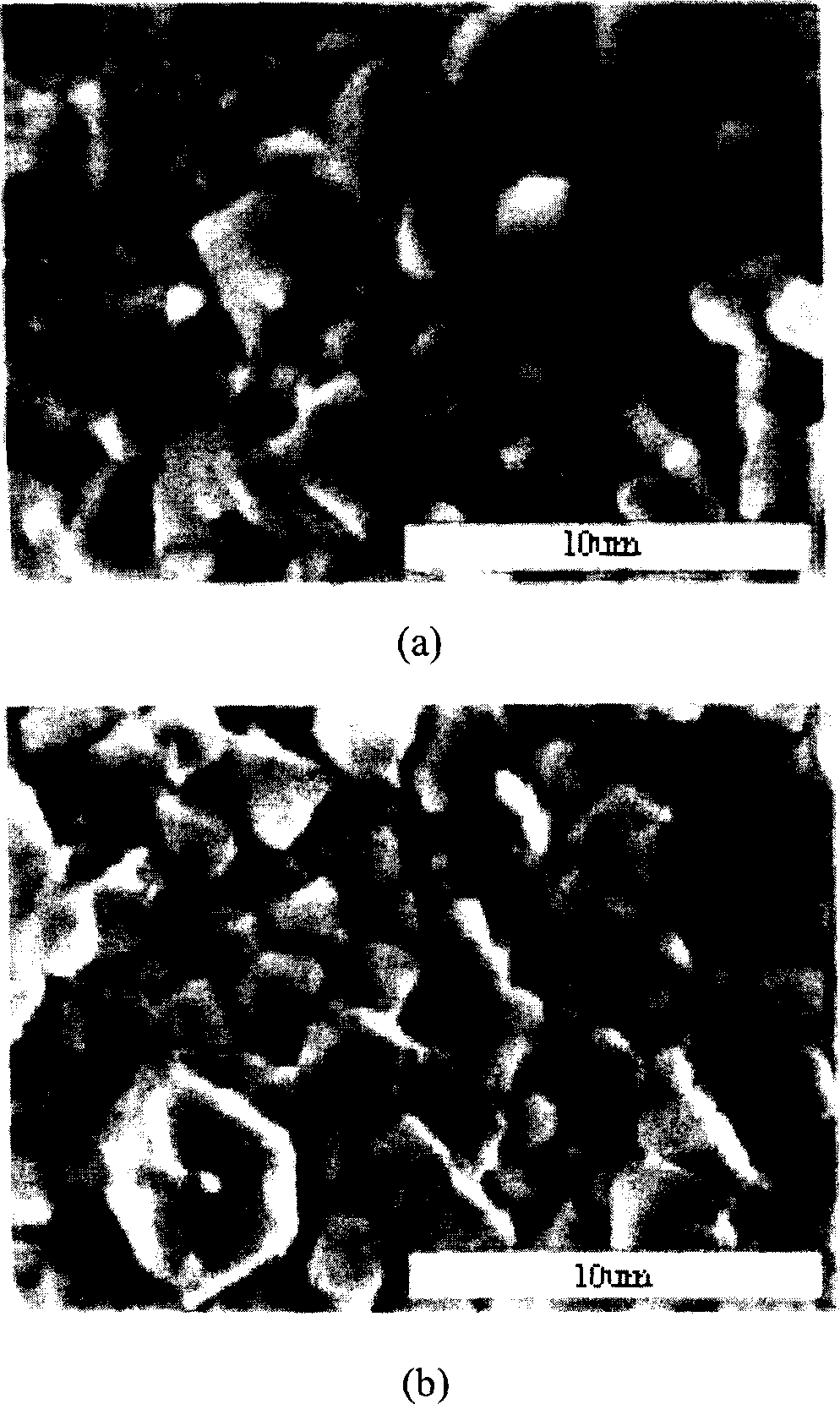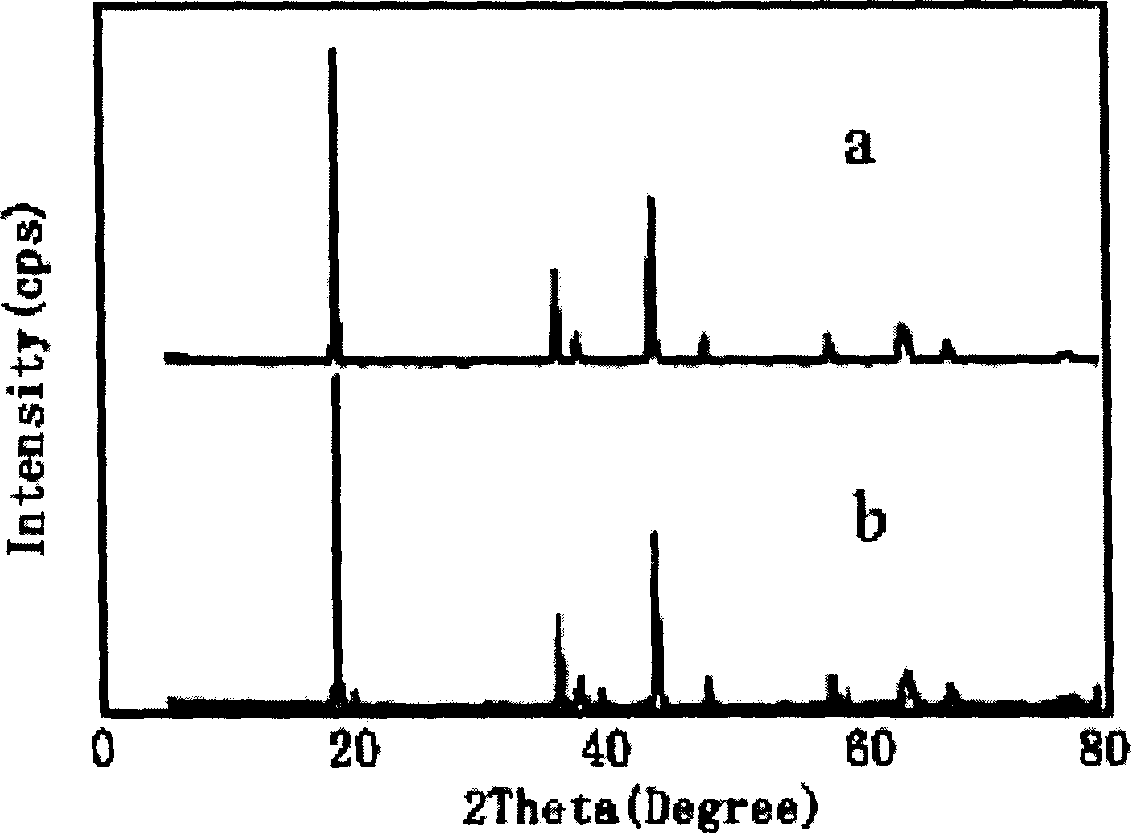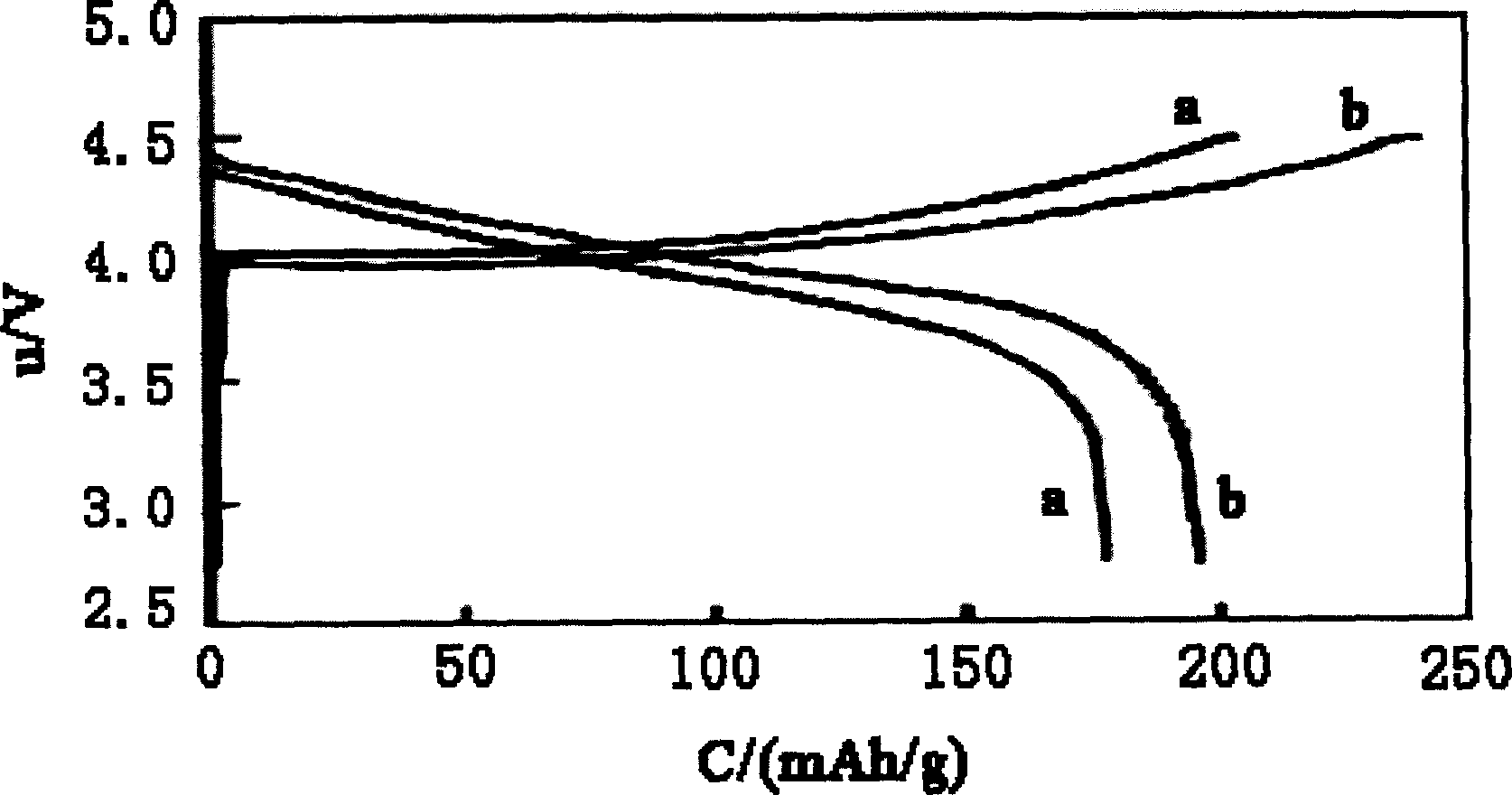Manganese-included multi-element metal oxide, lithium ion secondary battery anode material and its preparing method
A multi-metal, secondary battery technology, applied in secondary batteries, manganese compounds, battery electrodes, etc., can solve the problems of processing behavior, poor cycle performance, poor cycle performance, etc., to achieve improved cycle performance, increased agglomerated particles, The effect of improving the specific capacity of charge and discharge
- Summary
- Abstract
- Description
- Claims
- Application Information
AI Technical Summary
Problems solved by technology
Method used
Image
Examples
Embodiment 1
[0043] Take nickel (Ni), cobalt (Co), and manganese (Mn) sulfates at a molar ratio of 1:1:1 and mix them to prepare 1 L of an aqueous solution with a total metal content of 1 mole. Under nitrogen atmosphere and constant stirring, Slowly drop it into 1L, 2.2M NaOH aqueous solution at 50°C. After 8 hours, the Ni-Co-Mn composite hydroxide was separated, washed several times with distilled water, and then dried in vacuum at 100°C for 10 hours, and its water content was accurately measured. After one part and lithium hydroxide monohydrate (LiOH·H 2 O) Mixed grinding at a molar ratio of 1:1.06, then placed in an intelligent control muffle furnace, under dry air, the temperature was raised to 300°C at 2°C / min and kept at a constant temperature for 6 hours for the first heat treatment, and then heated at 2°C / min to raise the temperature to 750°C and keep the temperature for 16 hours for sintering, then naturally cool the product to room temperature, grind and sieve to obtain the posi...
Embodiment 2
[0048] Take nickel (Ni), cobalt (Co), and manganese (Mn) nitrates in a molar ratio of 8:1:1 and mix them to prepare 1L of an aqueous solution with a total metal content of 2 moles. Under the condition of argon atmosphere and constant stirring, Slowly drop it into 1L, 4.4M KOH aqueous solution at 50°C. After 9 hours, the Ni-Co-Mn composite hydroxide was separated, washed several times with distilled water, and then dried in vacuum at 120°C for 8 hours. Lithium (LiOH·H 2 O) After mixing and grinding at a molar ratio of 1:1.05, place it in an intelligent control muffle furnace. Under dry air, heat up to 320°C at 5°C / min and keep the temperature for 5 hours for the first heat treatment, and then heat at 5°C / min The temperature was raised to 750°C and kept at a constant temperature for 18 hours for sintering, and then the product was naturally cooled to room temperature, ground and sieved to obtain the positive electrode active material LiNi 0.8 co 0.1 mn 0.1 o 2 , and then car...
Embodiment 3
[0053] Take nickel (Ni), cobalt (Co), and manganese (Mn) acetates in a molar ratio of 1:1:1 and mix them to prepare 1L of an aqueous solution with a total metal content of 0.9 moles. Under nitrogen atmosphere and constant stirring , slowly drop it into 1L, 2.2M NaOH aqueous solution at 40°C. After 10 hours, the Ni-Co-Mn composite hydroxide was separated, washed several times with distilled water, and dried under vacuum at 120°C for 10 hours, and mixed with monowater Lithium hydroxide (LiOH·H 2 O) After mixing and grinding at a molar ratio of 1:1.04, place it in an intelligently controlled muffle furnace. In dry air, heat up to 360°C at 5°C / min and keep the temperature for 7 hours for the first heat treatment, and then heat at 5°C / min. The temperature was raised to 750°C and kept at a constant temperature for 20 hours for sintering, then the product was naturally cooled to room temperature, ground and sieved to obtain the positive electrode active material LiNi 1 / 3 co 1 / 3 mn ...
PUM
 Login to View More
Login to View More Abstract
Description
Claims
Application Information
 Login to View More
Login to View More - R&D
- Intellectual Property
- Life Sciences
- Materials
- Tech Scout
- Unparalleled Data Quality
- Higher Quality Content
- 60% Fewer Hallucinations
Browse by: Latest US Patents, China's latest patents, Technical Efficacy Thesaurus, Application Domain, Technology Topic, Popular Technical Reports.
© 2025 PatSnap. All rights reserved.Legal|Privacy policy|Modern Slavery Act Transparency Statement|Sitemap|About US| Contact US: help@patsnap.com



